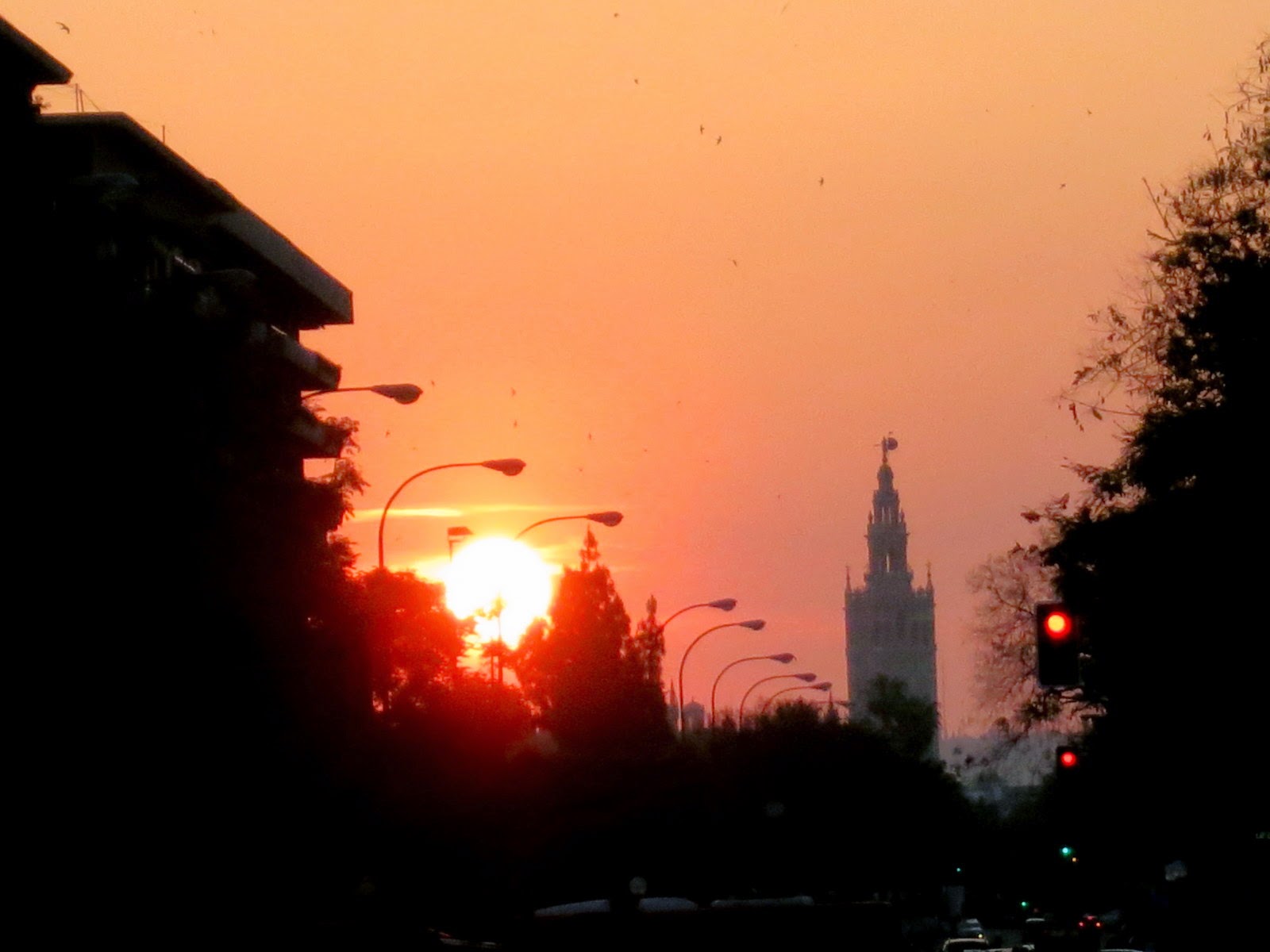Thanks
to our friend, Gastón, we were proud owners of the Semana Santa application on
our phone, the Llamador. There was
all the information here that we needed, numbers of nazarenos and their colours, itinerary, map and approximate times
of where the processions can be expected. We absolutely loved this app and it
helped us out many times during the Holy Week.
According
to our cool app there was another procession on Saturday that we could watch,
the La Milagrosa. It was especially
important as we had just moved to the new neighbourhood and this procession
belongs to that neighbourhood’s brotherhood. However there was one intriguing
detail: next to the name there wasn’t any picture of the nazarenos! A cofradía
without nazarenos? Is that possible?
We had to go and see it for ourselves.
It
all seemed to be true. The people who were walking with the giant candles were
completely ‘ordinary’, they weren’t wearing any weird outfits, only smart
clothes. However when the paso got
closer we saw a group of soldiers. They were marching to the rhythm, the sun
shone on their armour and it looked like it was made of gold. The soldiers
represented the Jewish Guard.
Then
came a huge paso with many figures
and even a horse!
Even
without the nazarenos we found this
procession very impressive. When we turned around to make our way home, we saw
a beautiful sunset.
Can
nazarenos be women, too?
Now
this is an interesting question. According to the Spanish I have been quizzing
about this it seems that not very long ago only men could be part of the actual
procession. The women had a lot to do during the year, such as sewing outfits
and insignias, looking after and decorating the floats etc. however they were
banned from participating in the cofradía.
Feminism however reached Spain, too, and nowadays you can see painted nails, a
pink pair of socks or a colourful bracelet here and there flashing out from the
nazareno outfit.
Having
said that there are still a few brotherhoods who consider tradition more
important than feminism and they still don’t accept women nazarenas.
Isn’t
that discriminating?
It
might seem like the brotherhoods in Seville have something against women
however things are changing in this area as we speak. As I said, most of them
are happy to accept female nazarenos,
too.
On
the other hand to me it seems that the event is impressively inclusive. I have seen a nazareno in a wheelchair and even one who had Downs syndrome. He
even had a candle although it wasn’t lit and he didn’t have his face covered
like all the rest of the others.







No comments:
Post a Comment